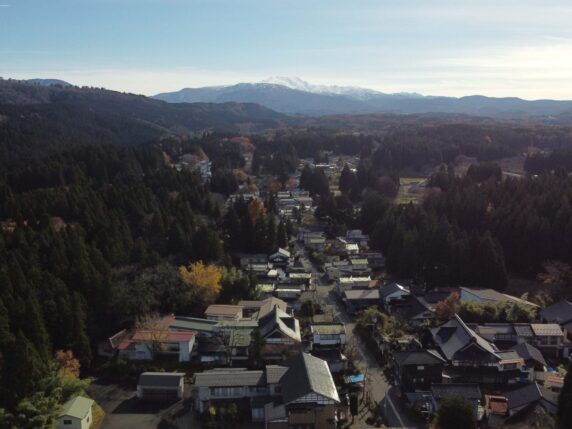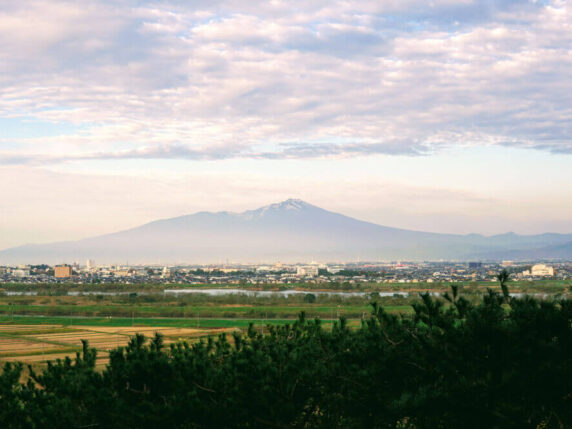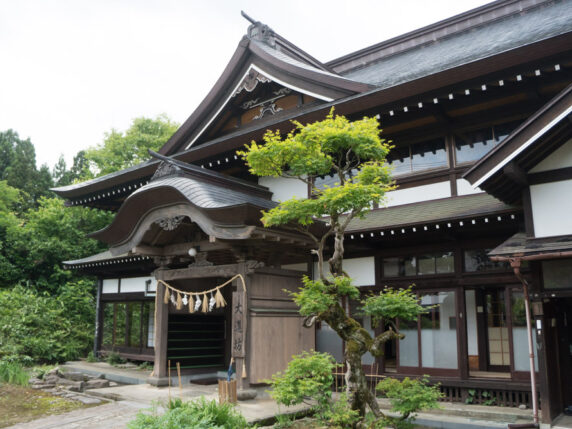Saikan: Shrine Lodging on Mt. Haguro
Written by Timothy Bunting
Meticulously placed stones line the path off Haguro-san's stone stairway that leads up to the ancient entrance of an enchanting place, Saikan. Saikan is a former temple that provided generations of Yamabushi mountain monks all they needed for training; altars for rituals, Shojin Ryori (Ascetic Cuisine), Shiroshozoku garments for purification, and of course, lodging. These days, Saikan offers all this and much more to both devout Yamabushi and ordinary tourists alike. Making a trip to the Dewa Sanzan? You won’t regret visiting Saikan, one of the Dewa Sanzan’s most unique locations.
Saikan’s Grand Entrance
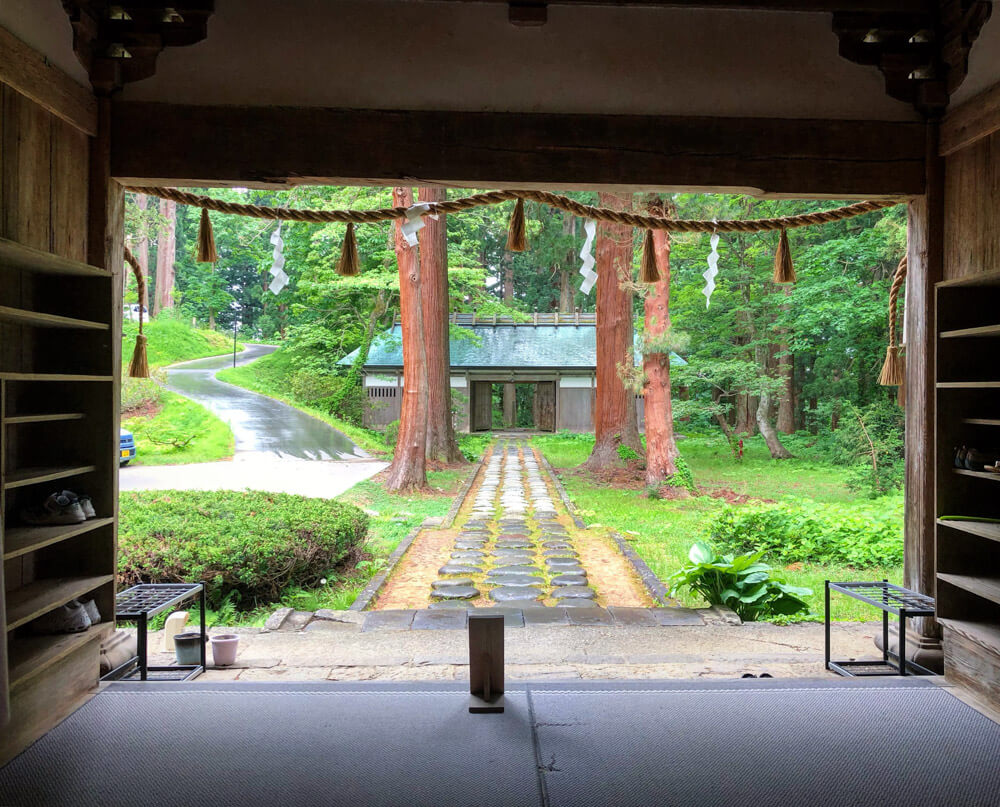
Saikan’s unique mixture of architecture is noticeable even before you step inside. Although originally Kezoin, a temple built in 1697, Saikan’s entrance dates back to the 1500s. Kezoin was one of the three main temples on Haguro-san alongside Chiken’in and Jakkoji (the current Dewa Sanzan Shrine in Sanjingosaiden).
Saikan's Tumultuous History
Until the Meiji Restoration, Shinto shrines and Buddhist temples had coexisted in (relative) harmony since Buddhism's introduction to Japan in the 6th century. Then, during the Meiji Restoration beginning in 1868, nationalists came to view Buddhism as an outsider religion. At this time, the Japanese government sought state Shintoism and any religion besides Shintoism was targeted. Violent anti-Buddhist sentiment grew throughout Japan and Buddhist temples such as Kezoin were given an ultimatum: switch to Shintoism and destroy all signs of Buddhism, or face violence at the hands of the nationalists.
For the Dewa Sanzan, this meant followers of Haguro Shugendo or Buddhism were greatly affected. Many temples on the Dewa Sanzan were destroyed during this time, including Gohonbo half-way up the mountain where thousands of monks reportedly lived. Buddhist relics, statues, and books were destroyed, land was confiscated, and many monks were forced to switch to Shintoism or stop worshipping altogether. Evidence of this destruction can be seen all across the Dewa Sanzan, such as with the Jizo statues next to the Five Story Pagoda who have their heads chopped off.
In a move that proved vital in ensuring the survival of the buildings, Kezoin chose to change allegiances to Shintoism. This meant that the newly named Saikan is one of the only few surviving Buddhist structures on the Dewa Sanzan. In fact, of 31 temples on Mt. Haguro, only three survived to tell the tale (Saikan, Shozen’in Koganedo and Kotakuji). Things really died down in 1873, which is why there are still many Buddhist temples and artefacts such as the Five Story Pagoda around. Moreover, following Japan’s return to freedom of religion after WWII, Saikan joined the majority of the Dewa Sanzan in remaining Shinto. Saikan became a Tsuruoka City Tangible Cultural Property in March 2005.
Remnants of History: Saikan’s Buddhist Beginnings
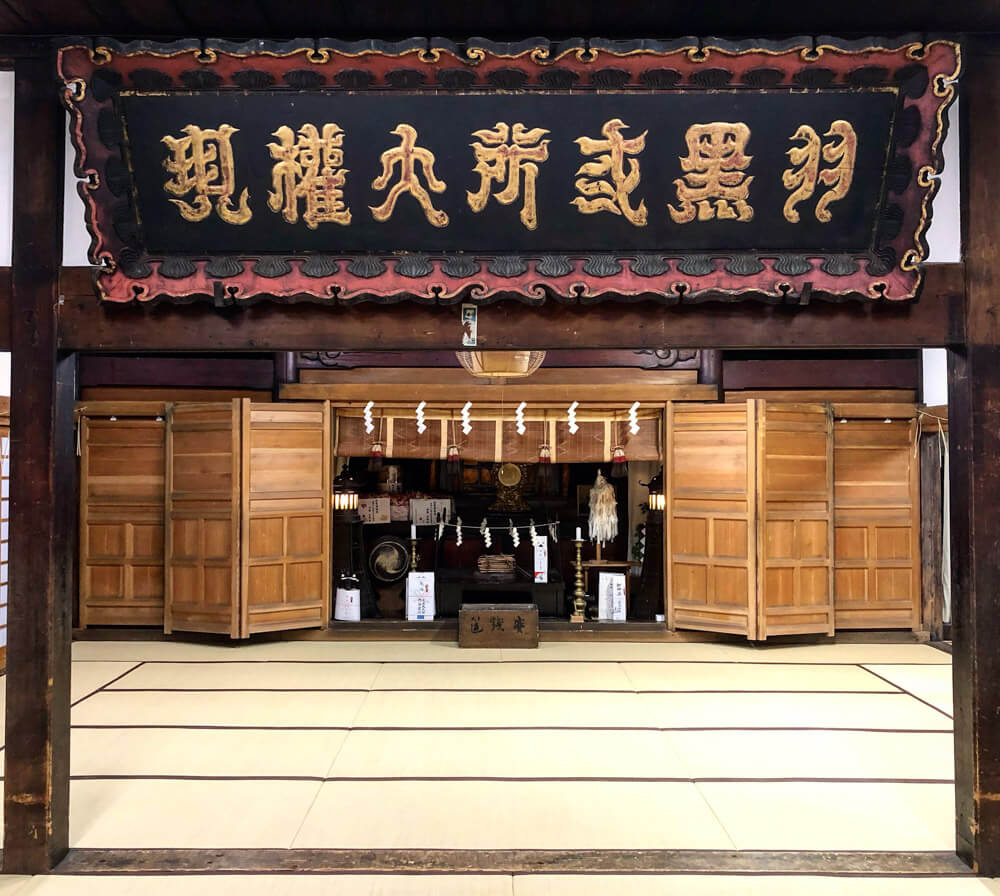
Evidence of Saikan’s Buddhist history can be seen throughout the former temple. As you enter the main hall, you may notice a big sign in the centre with stylized writing. This sign says ‘Haguro Sansho Daigongen’. A Gongen is an avatar of a Buddhist deity taking the form of a Shinto Kami deity to provide salvation to the Japanese. Haguro Sansho Daigongen refers to the Gongen of the Dewa Sanzan, which were previously known as the Haguro Sanzan. The names are Haguro Daigongen, Gassan Daigongen, and Yudono Daigongen, for Haguro, Mt. Gassan, and Mt. Yudono respectively. Haguro Daigongen is the Shinto manifestation of Kan’non Bodhisattva (Sanskrit Avalokitêśvara), the Buddha of Worldly Benefits. Gassan Daigongen is the Shinto manifestation of Amida Nyorai (Sanskrit Amitābha), the Buddha of Immeasurable Light and Love. Finally, Yudonosan Daigongen is the Shinto manifestation of Dainichi Nyorai (Sanskrit Vairocana), the Supreme Buddha of the Cosmos.
Next, take a look at the ceiling above the nearby altar. Notice that it is completely black from the countless Buddhist fire rituals the Yamabushi held there over the years. Behind this hall lies Saikan’s Chashitsu tea room, which Buddhism also heavily influenced. This room takes after the tea room of Ginkakuji Temple in Kyoto with its twisted pillar, a charm against evil. Those lucky, or smart, enough to book the Chokushi-no-ma room, will notice its raised floor. The Chokushi-no-ma is the most prestigious room in the building, playing host to dignitaries over the years. The room was made in the Kyoto style in a sign of respect to the emperor at that time. This room has the best view out over the Shonai plains and to Chokai-san, and the Ranma, partition between the corridor features a chrysanthemum pattern, reminiscent of the imperial family.
Saikan's Shinto Shugendo Revival
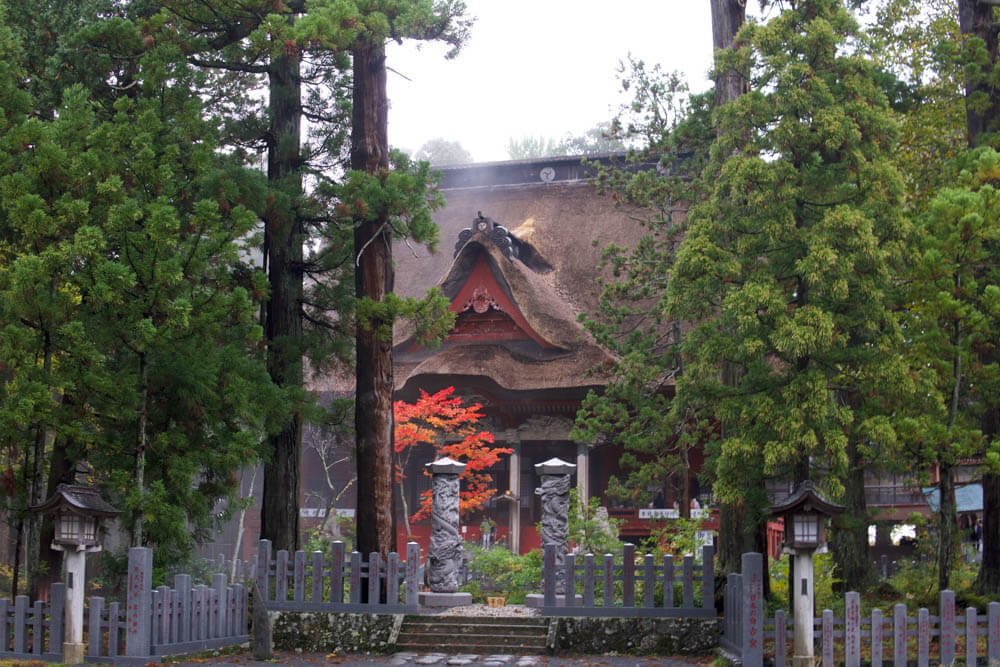
A long hallway connects Saikan with the nearby Dewa Sanzan Shrine. During winter, Haguro-san becomes inundated with snow, and this hallway means access is available year-round. Those who want a particularly spiritual experience are invited to join the daily prayers at the shrine, such as the morning service at 7am.
Saikan also plays host to one of the most important events on the Dewa Sanzan calendar. From the 22nd of September each year, two Yamabushi from Toge take part in the Fuyunomine Winter Peak Ritual. Named Matsuhijiri, the two Yamabushi spend 100 days praying for a good harvest to the gods of the Dewa Sanzan. The first half of those days are spent in their respective homes, and the second half are spent in a specially-designated room in Saikan. Then, on New Year's Eve, the two Matsuhijiri compete against each other during the Shoreisai Festival at the top of Mt. Haguro.
Survival Food: Dewa Sanzan Shojin Ryori
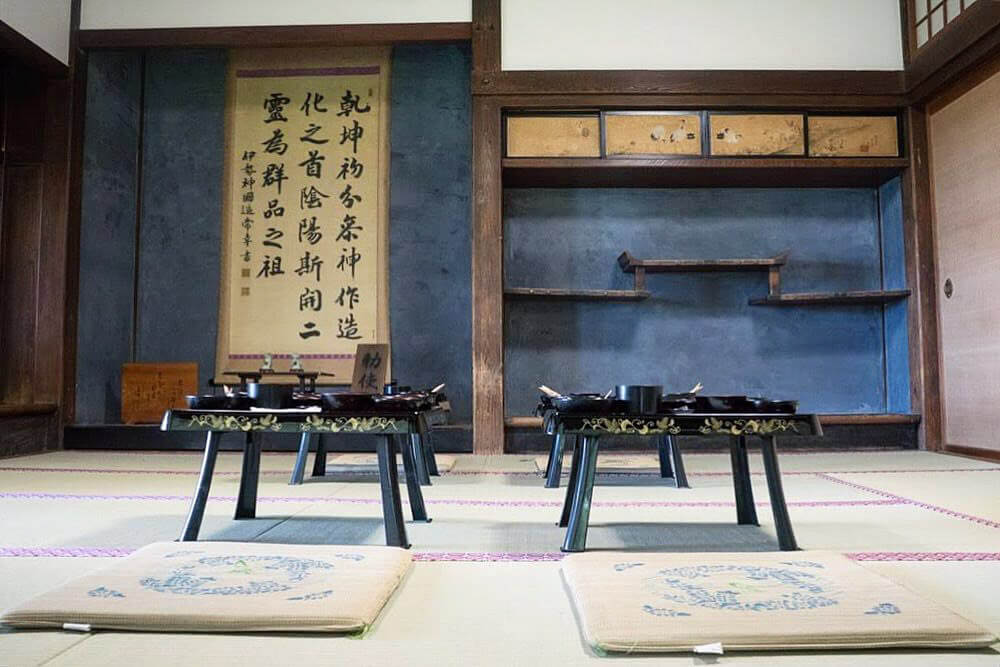
The Dewa Sanzan Shojin Ryori (ascetic cuisine) Saikan provides is one major reason why Tsuruoka became the only UNESCO Creative City of Gastronomy in Japan, a country absolutely obsessed with food, in 2016. Dewa Sanzan Shojin Ryori developed when Yamabushi ate what they could for survival during their rigorous training. From nuts, to roots, grasses, bamboo shoots, flowers, and mushrooms, Yamabushi ate anything edible on the mountains.
Over time, salting, pickling, sun-drying and other preservation methods developed that meant Yamabushi could spend longer in the mountains. Not only did these preservation methods mean foods could be stored longer, they also allowed the removal of toxins and bitterness meaning they could be eaten.
Before long, those making the pilgrimage to the Dewa Sanzan wanted to copy the diets of the Yamabushi. However, the training meals the Yamabushi ate were not substantial at all. So, they began preparing meals from Naorai, the celebratory meals Yamabushi eat after training. Then, Dewa Sanzan Shojin Ryori, prepared in Saikan for centuries, spread throughout the Shukubo Pilgrim Lodges.
Saikan: Straight from Mountain to Mouth
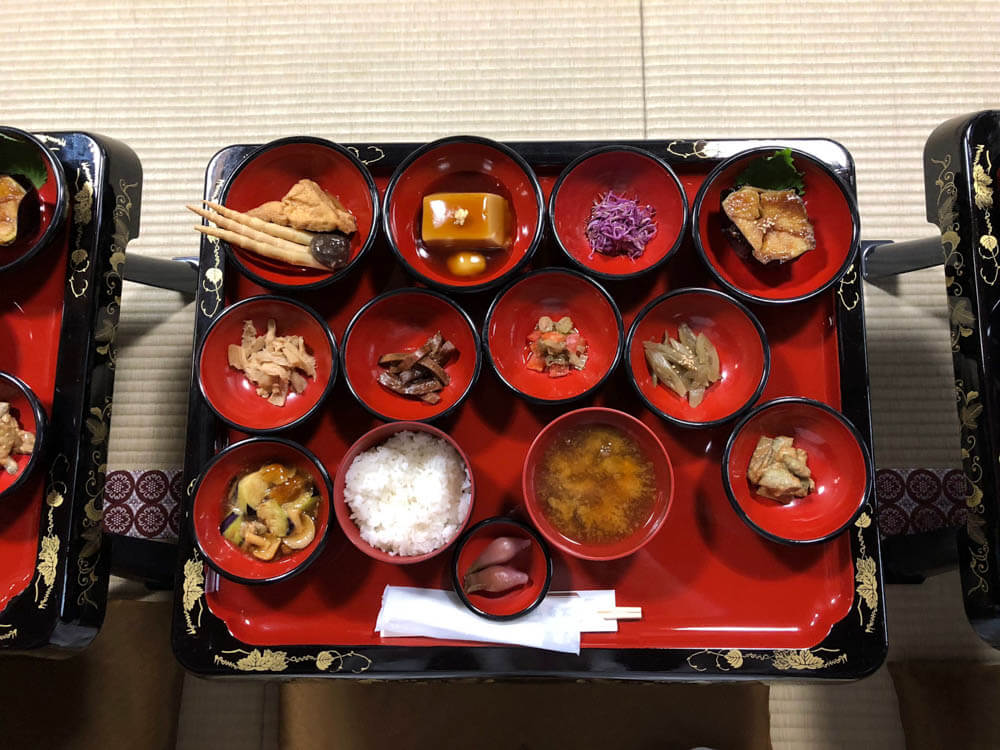
It goes without saying that Sansai mountain vegetables form the basis of Dewa Sanzan Shojin Ryori. Mushrooms, bamboo, eggplants, green peppers, walnuts, chestnuts, sesame, and the more unique Japanese mugwort, ostrich fern, Japanese knotweed, butterbur, bracken shoots, chrysanthemum, shiso, akamizu, zenmai, and udo all come together in an eclectic mix of flavours and textures using techniques developed over centuries on Mt. Haguro. Although it is not tofu, the so-called Goma Dofu, Sesame Tofu, is the local specialty developed in the Dewa Sanzan. Chefs ground sesame, make it into a paste, harden it, and add a sweet viscous paste called an to create a feast for the senses.
Led by chef Shinkichi Ito, chefs at Saikan gather ingredients almost entirely from the nearby mountains, including some they grow themselves. However, as Saikan is not Buddhist, they do not follow the same rules as other Shojin Ryori providers. For example, the Dashi stock used in the miso soup sometimes contains Bonito flakes, and meals sometimes contain fish. In saying that, if asked, Saikan can create vegan dishes using kelp Dashi stock, you just need to ask.
Saikan Accommodation: Staying in Saikan

Saikan provides accommodation year-round, even during the deep snow and cold of winter. Probably the best season to visit Saikan would be late spring or autumn. During this time, the weather is not too hot and there are unobstructed views outside. The autumn leaves of the Dewa Sanzan are also a great opportunity to get outside, and Saikan is the perfect place to stay to take them in.
Be warned that the building is more than 300 years old, so there is a complete lack of insulation. This means the hallways get very cold during the winter, and very hot during the summer, however heating and air-conditioning is available. Although Saikan is a former temple, there are many modern amenities. Each room has a TV for those Japanese shows, and there is an Onsen hot spring for guests. For those wishing to stay in Saikan, please contact us using the form below. We are currently working on our booking systems and appreciate your patience.
Getting to Saikan

If you're already planning on hiking the Dewa Sanzan, chances are you'll pass right by Saikan. Access Saikan by either climbing the stone steps up Mt. Haguro, or by getting to the car park at the top and walking from there. You can reach this car park by car if you pay the ¥400 toll, or by public bus. Find more information in this article.
Warning!
If you are staying in Saikan, be warned that Google Maps' information is incorrect (as of February 2025, we are working to get it fixed). For whatever reason, Google Maps doesn't connect the stone stairway to the summit, which it should.
Saikan can be very hard to find at the best of times. So, whenever possible, come during daylight hours. Unless specially requested, dinner is at 6pm, so you want to be there by then anyway. The easiest thing to remember would be that the entrance to Saikan is off Haguro-san's stone stairway about 500m from the torii gates at the summit (pictured above).
If you're coming via the summit, i.e. by bus or car, from the main parking lot head towards Sanjingosaiden, the main shrine building of Dewa Sanzan Jinja. You'll see a stone pathway leading past this shrine building and down the mountain. There you will also see these shrine gates that lead into the mountain. Follow the stone stairway down about 2-300m (about 2 or 3 minutes), and you'll see part of the trail lead off to the right. Follow this path. It is the entrance to Saikan.
If you're coming up the stone stairway, the opposite is true. You will see a path going off to the left before you reach these gates.
Conclusion
Saikan’s location at the top of Mt. Haguro puts you in a great spot for exploring the Dewa Sanzan. Not only for climbing the stone stairway and visiting the Five Story Pagoda of Mt. Haguro or catching the bus to Mt. Gassan, but also for many of the festivals that take place there such as the Dewa Sanzan Flower Festival Hanamatsuri in July, the Hassaku Festival in August, or the Shoreisai Festival on New Year’s Eve. Unfortunately, the availability of busses to Mt. Yudono from Saikan is lacking, so it helps if you have your own transport. For those looking for a more convenient location, we would recommend the Shukubo Pilgrim Lodges at the base of Mt. Haguro.
Timothy Bunting
Tim Bunting is a Dewa Sanzan Shrine Yamabushi with over 10 years' experience living beneath the three mystical peaks. He is a self-professed Dewa Sanzan nerd, and is currently working on the Yamabushido project and Dewa Sanzan Monzenmachi Project with Megurun Inc. His roles including assisting in Yamabushi trainings, translating, interpreting, and curating Dewasanzan.com.
Insider information and updates on
The Dewa Sanzan.
Subscribe to the Dewa Sanzan Tribe now.

